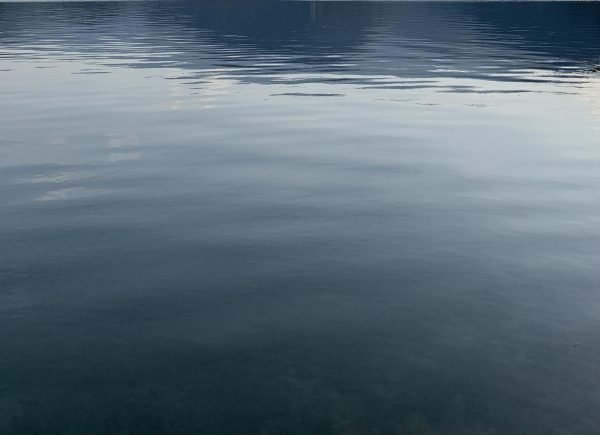UNCW aerial survey team assist in whale disentanglement rescue off Georgia coast
UNC Wilmington researchers conducting an aerial survey for the U.S. Navy discovered a North Atlantic right whale disentangled in more than 100 yards of heavy fishing rope on Sunday, Feb. 16. Known as Right whale No. 4057 by researchers, the four-year-old male whale was found 40 miles off Georgia’s Wolf Island.
North Atlantic right whales are one of the most critically endangered marine mammals in the world.
Erin Cummings, a master’s student and aerial observer for UNCW’s Marine Mammal Stranding Program, was a part of the UNCW aerial team that first discovered that the whale’s entrapment.
One of the leading causes of death and injury for right whales is entanglement in commercial fishing gear, Cummings said. She also said that ship collisions are a second leading cause of North Atlantic right whale fatalities, revealing that there are occasional strandings of right whales off the Atlantic coast.
The UNCW aerial survey team responded to the sight of the right whale after a collaborating team from Duke University’s Marine Lab first sighted the whale, while conducting short-term tagging of North Atlantic whales.
The Duke team did not realize the whale was entangled until they requested that UNCW’s survey plane photograph the whale in a more refined location—which, upon arrival, found the whale ensnared in a long line of heavy fishing rope.
Duke University and UNCW’s team first saw the whale standing subsurface. Duke’s team called UNCW’s plane over, which found the whale for them, Cummings said.
Once Cummings and her team photo-documented the whale and its entanglement, Duke applied a short-term tag on the whale to allow the mammal to be monitored that day.
Researchers from the Florida Fish and Wildlife Commission later added a telemetry buoy that allowed the whale to be tracked overnight. By Tuesday morning, Feb. 17, an FWC aerial survey team found that the whale had covered 60 miles in 17 hours.
That morning, the Georgia Department of Natural Resources, the FWC and the National Oceanic and Atmospheric Association devised a disentanglement operation that removed more than half of the 11/16-inch diameter lead rope from the whale using a cutting grapple.
Responders were unable to remove all of the rope because the whale avoided the team’s boat, and the remaining rope was entangled in the whale’s baleen—the filter feeding structure of its upper jaw.
The right whale had severe injuries on his head and flukes. Responders hope that the whale will shed the rest of the rope on his own.
Right whales migrate south to the breeding grounds of Georgia and Florida. They do strand in other areas because ships strike and entanglement, Cummings said.
Stranding is the beaching of a live or dead mammal. Among the states along the Atlantic and Gulf coasts, North Carolina has the highest number of strandings per unit beach: 123 marine mammals were stranded in N.C. in 2007.
Cummings said she is involved in all aspects of stranding that occur off the Atlantic coast.
“Any kind of stranding, I’m involved in,” she said. “And only 400 to 450 of them are left.”
The U.S. Endangered Species Act of 1973 and the Marine Mammal Protection Act of 1972 protects the rights of North Atlantic right whales, which include authorizing the listing of species as endangered or threatened.
Since whaling was banned in 1935, North Atlantic right whales continue to be threatened by ship collisions and entanglement from commercial fishing gear.
More than 80 percent of North Atlantic right whales suffer injuries from rope entanglements and nearly 60 percent have been entangled twice.
UNCW’s Marine Mammal Stranding Program allows researchers to document human impacts on marine mammals, including right whales, and ensures each mammal’s conservation.







